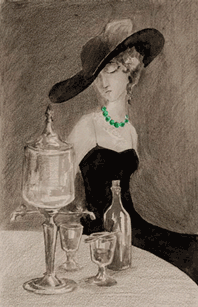
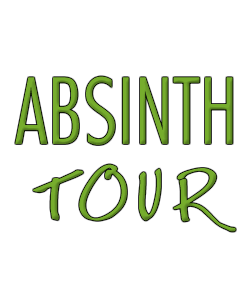
History
THE STORY OF THE GREEN FAIRYTHERE HAS BEEN RESTORED AN OLD FRENCH RECIPE OF THE ABSINTHE IN CZECH REPUBLIC
The recipe of one of the most mythical beverages of the 19th century, which has driven people out of their mind and made them look at the surrounding in a new way, in the green pool of which there have been so many mysteries that one cannot understand so far how to treat it, is born anew at the threshold of the 21st century.
The history of the beginning of the Green Fairy`s myth - as the Absinthe has been called in France - goes back to the far 18th century when the receipt was introduced. The original King of Spirits has contained toyon, which affected a man ambiguously: either made him a genius or a loony (which is, frankly speaking, the same!). That is, why the beverage has been so valued by the great Parisian Bohemians - Vincent van Gog, Paul Verlen, Edgar Dega … . Besides, the Absinthe has possessed unique aphrodisiac properties, which also promoted it triumphantly through Europe at the midst of the 19th - beginning of the 20th centuries.
It has been a great success not only because of the remarkable taste but also of the ritual accompanying degustation process. One of the most wide-spread ways to drink it was a riot called “pelle”. First, one poured just a little of the Absinthe into a wine-glass, as much as a person considered "reasonable" for himself, evaluating the "reasonability" by the hue of "the green" in the glass. Then a special spoon was carefully put onto the glass, and a piece of sugar in the spoon, which was slowly watered on. The sugar melted and dripped into the glass through the narrow chinks in the spoon. It gave the beverage an emerald or an opal colour.
Unfortunately, the grand success of the Absinthe has brought it to the ruination, however strange it may be. At the beginning of the 20th century the liquor made a lot of enemies. The result of this was that it was banned first in the Belgian Congo, then, in 1906, in Belgium. The events have started developing impetuously. Holland banned the Absinthe in 1908, Switzerland - in 1910, the USA - in 1912, Italy - in 1913. And, to crown all, the 1st World war has broken out in Europe, what has played the very decisive role in the destiny of the beverage.
Problems at the fronts, army demoralization, the wine-making lobby, the Nations League`s Anti-alcoholic campaign impelled the French government to seek for a “scapegoat”. And it has found it, having banned the Absinthe. It happened in 1915. Only under the pressure of the accidental circumstances as well as because of the wrong idea, what effect the liqueur has on a human being`s organism, the Absinthe has been accused of all the troubles and blamed more than any other alcoholic drink.
And after the Antanta`s victory the headquarters flooded the trenches with wine: 12 million decalitres were drunk in 1917. Absinthe has been forgotten of, the receipt of the King of Spirits has been lost… .
It could seem the history of the beverage should have stopped at the point. But for a “but”: the Absinthe has been and is a liquor of cult, mysterious, a little bit dangerous, and that`s why to many people so attractive that notwithstanding its status of the beverage banned almost everywhere in the world - or, maybe, exclusively due to the fact - people made all afforts to resurrect the original recipe of the King of Spirits. And so, in 200 years from its beginning the history found the continuation in Czech Republic!
They have been able not only to reveal and revive the old French recipe of the King of Spirits but they have also proved the absolute harmlessness of this wonderful liqueur. Certainly, if to follow the precise receipt and moderate consumption: you are not to drink the Absinthe one glass right after the other!
The restored King of Spirits corresponds in every aspect to the qualities of the authentic one. Besides, the latest experiments have resulted in the undoubtful improvement of the properties. What`s more unlike another sorts of the Absinthe, in production of which chemical substances are mostly applied, the improvement has been reached only thanks to the herbs the King of Spirits is infused on and which are brought from all over the world.
The manufacturing technology is very complex*: there is clouding in the last stages as well as a sediment as a result of the reciprocity of different herbs. Usually, one can remove the sediment only with the help of chemicals. But in Czech Republic they have achieved the original quality of the King of Spirits not using any chemical substances. The infusion process is a very important part of the technology. It takes place right in the bottle. And the longer it is drawn, the more perfect it is!
It is not only a recherche bouquet of the liqueur that adds to its legendary image, but also the drinking procedure. A person, who is drinking the Absinthe, worships, acquires the secrets of the witching powers of the herbs and rootlets!
Ritual
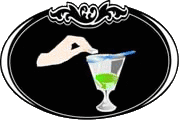
Special Absinthe glass.
Special Absinthe spoon filled with suger wet with Absinthe
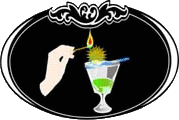
Fire the suger in the spoon
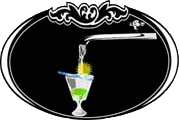
Smelting suger will drop and fire the Absinthe poured in the glass
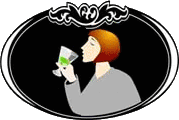
Dropping water from the fountain will down the fire, making the consistence of Absinthe the colour you would like it to drink.
Tour
Important Note: Praga Magica is offering this tour for cultural reasons only. This tour will focus on the role of Absinth in late 19th and early 20th century art. Praga Magica in no way encourages excessive drinking or alcoholism.Day 1. Arrival in Prague:
During the transfer from the airport to your hotel you will have a short panoramic preview of the city. After you have settled into your hotel, we will stroll through the Staré Město and Nové Město (Old Town and New Town). We will start from Václavské náměstí (Wenceslas Square) taking you to Staroměstské námistí (Old Town Square), while passing palaces, well known coffeehouses, theatres, famous churches which include - Panna Marie Sněžná (Our lady Mary in the snow) and sv.(svatý) Havel (St. Havel), then on to the markets: Uhelný trh (Coal Market) and Ovocný trh (Fruit Market) ending our walk on Karluv most (Charles Bridge). Our excursion is ending with degustation at the first Absinth bar in Tynska street.
Return to the hotel, dinner and to bed. However, based on the time of the year we could also take a bus trip around the lit monuments and possibly stop at Křižíková fontána (fountain).
Day 2. A day long tour with a guide - the castle and its environs:
Morning:
You will be taken to Hradčany (Prague Castle) to see the Strahovský klášter (cloister) with its philosophical and theological hall libraries (which are one of the most beautiful in the world) and Obrazárna klášter (Picture Gallery Cloister), Loreta (with its priceless treasures - e.g. the monstrance "Pražské slunce" (Prague Sun), which is completed with 6,200 diamonds. The Černínský, Toskanský, Schwarzenberský and other palaces, and the picturesque guarter Nový Svět (New World)
Afternoon:
Malá Strana (literally translated as "Lesser Guarter" which is the oldest part of Prague) - the magical town of art with its unforgettable corners and truly impressive palaces. Malostranské náměstí (Small Town Square) with its unusual and exceptional chrám sv. Mikuláše (cathedral of St. Nicholas), the chef d'oeuvre Dietzenhofer. Dinner.
Day 3.
Trip to Western Bohemia.
Full day excursion to the First Royal Absinth Factory at Pradlo near Nepomuc. Plzen - the Westerm Czech capital, famous not only for its Brewery tradition (Plsner Urquell is exported to more then 80 countries), but for the machine-building as well (Skoda). Lunch at the Plzen Brewery where the most famous Czech Beer is brewed -- Pilsner Urquell. Visit to historical City Center: amazing square where Renaissance, Baroque, Gothic buildings are represented, the highest Church tower of St.Bartholomew (106 meters), where one have a chance to see the most valuable statue of Black Madonna of Plzen of the 13th century, the last stop will be a unique Museum of Brewery. Return to Prague. Free time in the evening.
Day 4.
Architecture and Art Absinth take important part in: late 19th, early 20th century. Historical Styles: Neo Renaissance, Neo Gothic, Neo Baroque, Art Nouveau (Obecni Dùm with Mucha, Kupka, Preisler masterpieces), Cubism - House of the Black Mother of God, Constructivism, Functionalism. Traids Fair Palace.
After breakfast - check out of hotel. Facultative visit to the European Modern Art Gallery. Leisure. Possible to take part in Holy Mass at St.James Baselic (the biggest organ in Prague, the cellar of the church provides the best acustics).
Transfer to the airport.
Order form
© PRAGA MAGICA
PRAGA MAGICA, Slavíkova 6, Královské Vinohrady, 130 00 Praha 3, Czech Republic, e-mail: info@pragamagica.cz
